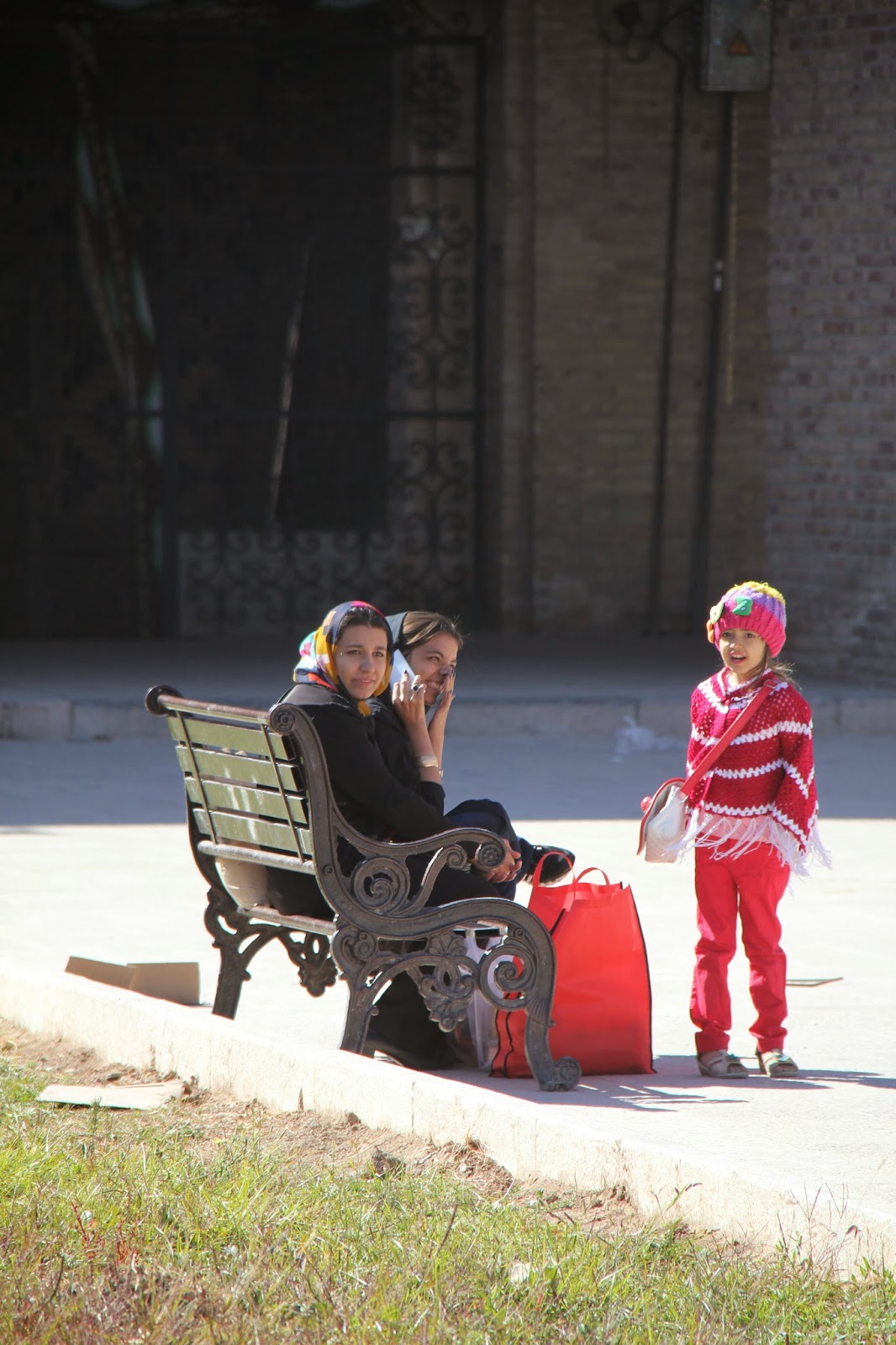Today is Kerman day. I sleep in and get off to a pretty slow start. In the hotel lobby I meet two Spanish travellers who have lost their Lonely Planet and ask whether they can join me and my guide book exploring the city. We start out at the mausoleum of the Sufi mystic Moshtaq Ali Shah (the person responsible for adding the fourth string to the ‘setar’, who was famous for his singing, to the point where he fell out of favour with the religious leaders and was stoned to death), followed by a visit to the 15th century Masjed-e Jameh (where Moshtaq Ali Shah met his death), the early Islamic era Imam Mosque, the partly restored, beautiful Golshan Caravanserai and the Ganj Ali Khan Square, a good place to observe Iranian families relaxing on the courtyard benches... Somehow I suddenly find myself back at the Vakil Chaikhaneh teahouse sipping my tea, whilst my Spanish friends savour a lemon flavoured ‘qalyan’...
At 2 pm I meet Ahmad, my guide, at the Masjed-e Jameh. He and his business partner Jalal are in the process of transforming an old traditional Kerman house into a guest house for tourists and they want to show me the result of the restoration work to get some feedback. I like the layout of the small hotel and the attention given in the rooms to details such as small wardrobes, niches, arched doors. Main piece of advice from my side... To please remove the neon lights and replace them with more soft lighting... I soon learn that they have a far bigger problem though... Three quarters of the way through the renovation work they were informed that a large transformer will be placed right in front of the new guest house. I soon find myself being filmed as a potential tourist/guest stating that I would not spend the night in a hotel room next to a transformer because of safety concerns. This footage will now be given to the Kerman Tourist authority and the Court dealing with Jalal’s request that the transformer be placed in a nearby park... I may still become famous in this lifetime...:-) My performance is rewarded with a cup of tea at Jalal’s home. I finish off my day in Kerman with a visit to the beautiful Hamam-e Ganj Ali Khan, another dream-like bath house (where one pool hall leads to the next, all beautifully decorated with simple frescoes) and lastly to the more disturbing Museum of the Holy Defence, dedicated to the Iran-Iraq war. Much of the exhibition is in Arabic script (i.e. impossible for me to decipher), but the photographic documentation is quite striking and at times quite gruesome. What a waste of precious young lives. It’s sad. Soon after the Shah fled and the Islamists took over in 1979, Saddam Hussein (supported by the US) decided to exploit Iran’s apparent weakness (as the ‘old’ army had been dissolved due to its allegiance to the Shah) to attack Iran and lay claim to the oil rich Khuzestan region. Iraq’s aggression actually ended up having the opposite effect as it galvanised Iranian nationalism and support for the newly-born Islamic Republic. Iran countered Iraq’s military superiority through the sheer number of fighters driven by a sense of righteousness and religious zeal, ‘basijis’ prepared to die as martyrs for the cause. On occasions such as Moharram, commemorating the martyrdom of Imam Hossein, bazaars, roadsides, city walls are covered with images of young men who died as ‘shahid’ (martyrs) during the 8 year Iran-Iraq War.
I walk back to the hotel passing by two interesting architectural structures – the Yakhchal Moayedi, a conical adobe structure built in the 16th century to store ice, and the Kerman National Library with its beautiful column front supporting vaulted ceilings.




























No comments:
Post a Comment